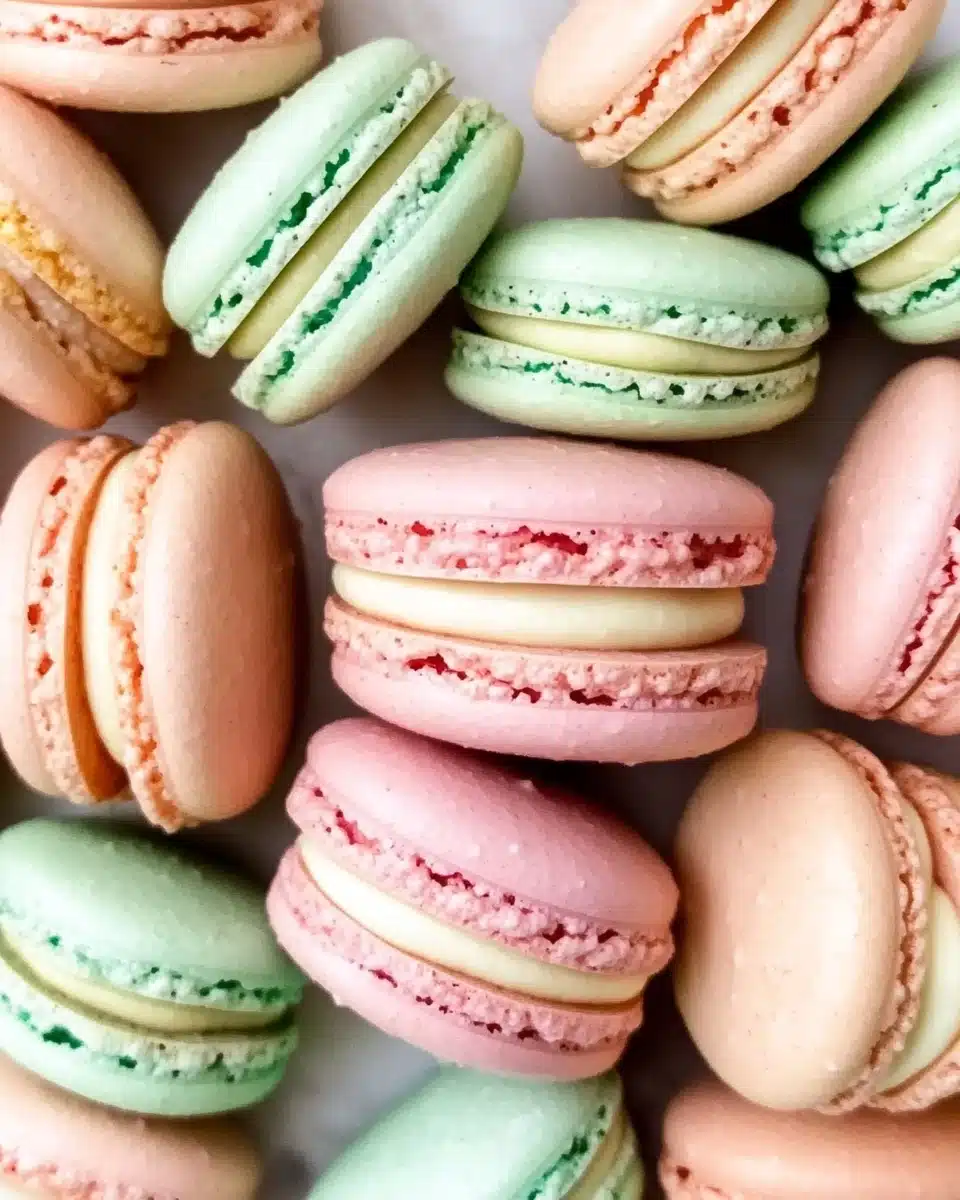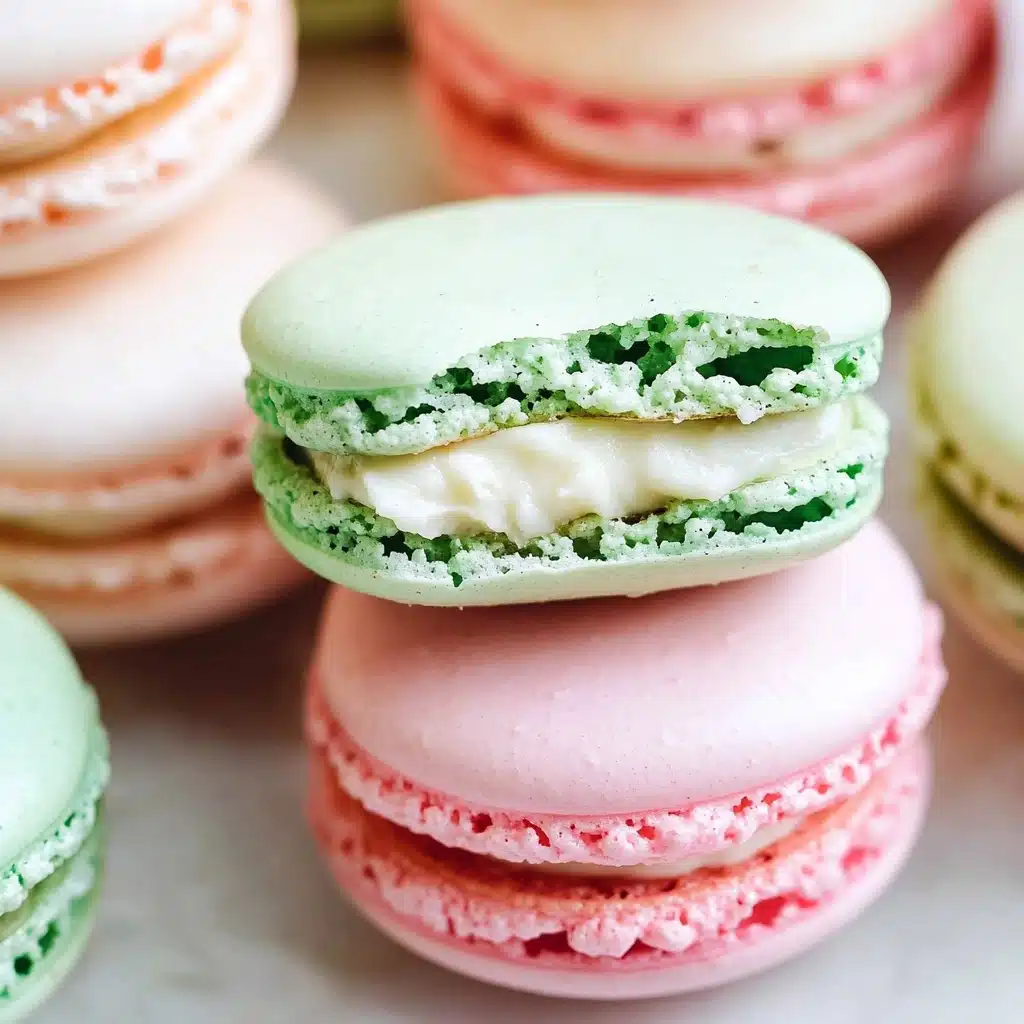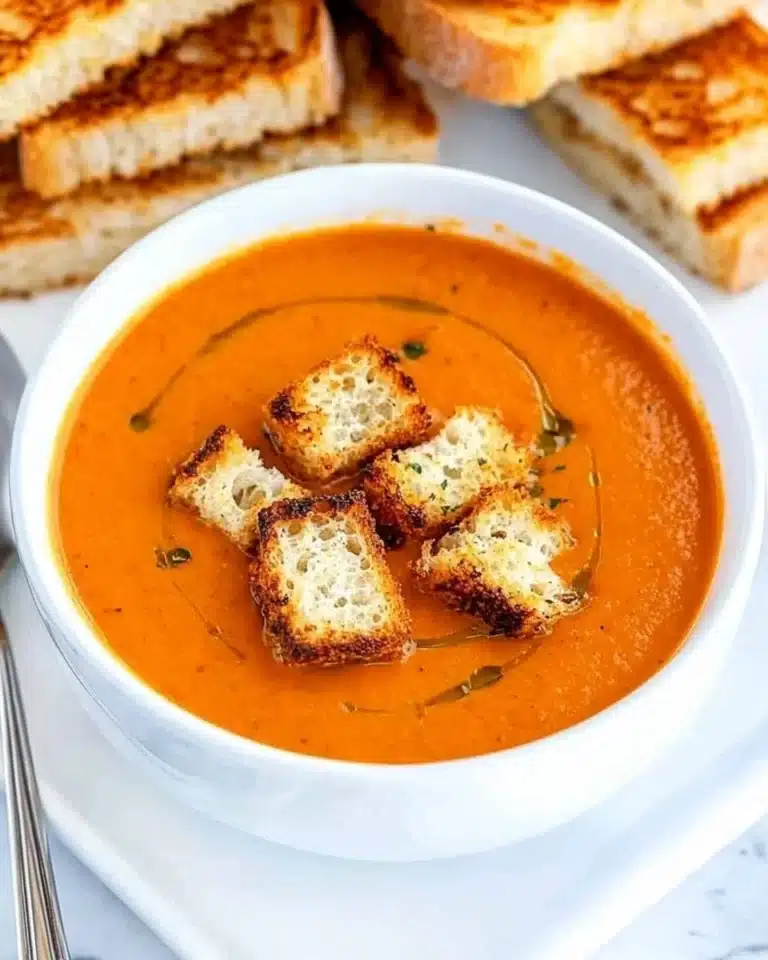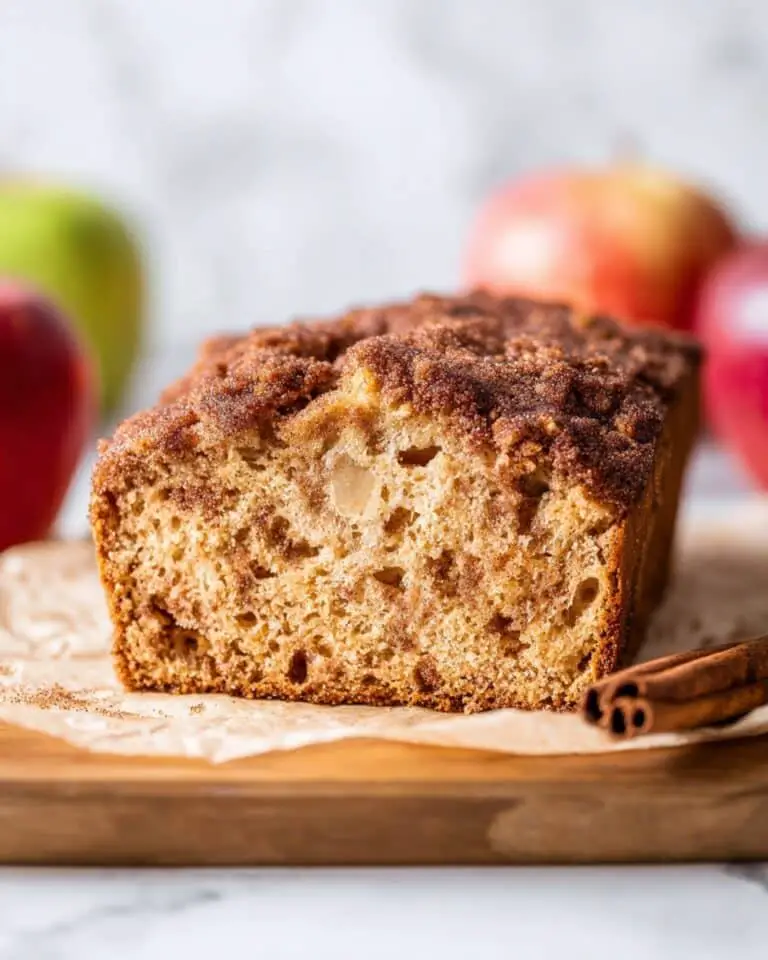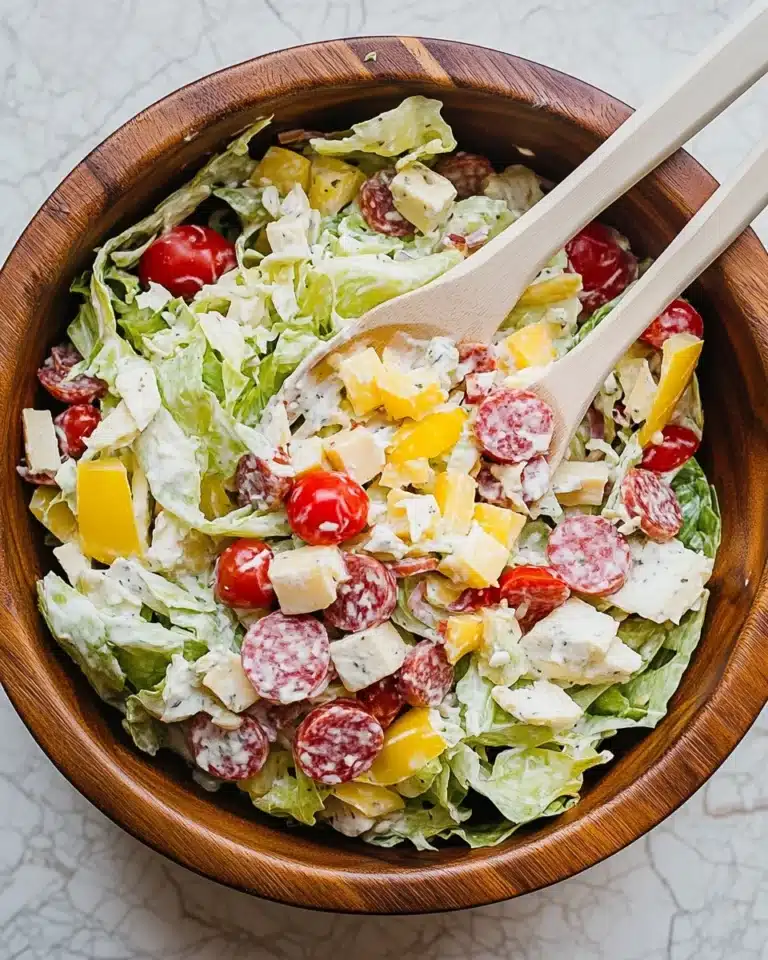Delicate, chewy, and irresistibly elegant, French Macarons are the epitome of sweet indulgence. These charming almond meringue cookies may look like they belong behind a Parisian pastry counter, but with some patience and the right tips, you can create your own gorgeous batch at home—no passport required!
Why You’ll Love This Recipe
- Bakery-Quality at Home: Experience crisp, chewy French Macarons baked right in your own kitchen—no fancy equipment or pastry degree necessary.
- Easily Customizable: From color to flavor and filling, you can make a batch that fits any mood, holiday, or craving!
- Impressive and Elegant: These beautiful little cookies are guaranteed to wow guests at showers, brunches, or afternoon tea.
- Step-By-Step Confidence: My thorough instructions and pro tips will help you master macarons with as little fuss (and fear) as possible.
Ingredients You’ll Need
Creating French Macarons calls for just a handful of humble ingredients, but each one plays a crucial role in giving these cookies their signature smooth shells and chewy middles. Let’s take a closer look at what makes each component so essential.
- Egg Whites: Aging and whipping egg whites provide the stiff, glossy meringue that forms the macaron’s “feet” and texture.
- Cream of Tartar: This little helper stabilizes your meringue to hold those lovely peaks.
- Superfine Sugar (Caster Sugar): Dissolves easily into egg whites, helping create silky, stable meringue—use store-bought or pulse your own!
- Gel Food Coloring (Optional): A tiny drop adds vibrant color without watering down your batter. Skip it for classic beige macarons.
- Almond Flour: The star ingredient! Be sure to use fine almond flour for smooth, delicate shells.
- Confectioners’ Sugar: Adds delicate sweetness and the ultra-smooth texture that defines classic French Macarons.
- Extract (Optional): A splash of vanilla, almond, or something creative adds depth and personality.
- Macaron Filling: Buttercream, ganache, jam, or your favorite frosting makes each bite a delightful surprise.
Variations
Once you unlock the basics of French Macarons, the sky’s the limit! Personalize your macarons with fun colors, creative flavors, and dreamy fillings—these dainty treats are completely customizable to your tastes and dietary needs.
- Chocolate Macarons: Swap in a bit of cocoa powder for some of the almond flour, and sandwich with rich chocolate ganache.
- Fruit-Infused Fillings: Use raspberry, lemon, or passionfruit buttercream for bright, tangy flavor.
- Nut-Free Option: For allergies, try sunflower seed flour in place of almond flour (texture may vary, but it works surprisingly well).
- Festive Colors: Match your macarons to any holiday or party theme using a drop or two of gel food coloring.
How to Make French Macarons
Step 1: Prep and Age Your Egg Whites
The secret to luscious, stable meringue? Age your egg whites! Simply separate them and let them rest in the fridge, covered, for 24 hours. This dries them out just enough for reliable whipping—and makes all the difference when you’re striving for perfect French Macarons.
Step 2: Make the Meringue
Bring your egg whites to room temperature. Wipe down your bowl with lemon juice or vinegar—this ensures oil-free success! Beat egg whites with cream of tartar and your chosen extract. Gently stream in superfine sugar to form a glossy, billowy meringue with very stiff peaks. If you want to tint your shells, fold in gel food coloring carefully now.
Step 3: Sift Dry Ingredients
Sift almond flour and confectioners’ sugar together into a clean mixing bowl. Don’t rush this step! It’s crucial for those signature smooth shells. Nudge any stubborn clumps through with a spoon—try not to waste a gram, as accuracy matters here.
Step 4: Macaronage, the Folding Magic
With patience, gently fold the meringue into your dry mixture in three additions. Use a rubber spatula to combine until it flows like honey. To test: let batter drip in a figure 8. If it takes 8–10 seconds to disappear, it’s ready! Macaronage is an art—slow and steady wins the race.
Step 5: Pipe and Rest
Scoop the batter into a piping bag with a round tip, then pipe small rounds onto your prepared sheets. Bang the trays firmly on the counter to pop air bubbles, and use a toothpick to burst any stubborn ones. Let the trays sit uncovered until the tops are completely dry and no longer sticky—this rest forms that vital “skin” for classic French Macarons feet.
Step 6: Bake to Perfection
Bake the macarons at 325°F (163°C) for about 13 minutes until they’re set and you see their ruffly little feet. Test by gently poking a shell—if it wobbles, give it another minute or two in the oven. Cool completely before removing them from the baking sheet.
Step 7: Fill and Enjoy
Once cooled, carefully pair up your shells by size and fill them with your favorite buttercream, ganache, or jam. Press gently to sandwich. For extra-special results, let your French Macarons mature in the fridge overnight—the flavor and texture only get better!
Pro Tips for Making French Macarons
- Meringue Mastery: Always whip egg whites in a spotlessly clean, grease-free bowl—just a hint of fat will ruin those beautiful stiff peaks.
- The Figure 8 Test: Don’t skip this visual clue when folding. It takes patience but prevents over or undermixing—practice and you’ll nail it!
- Resting = Ruffled Feet: Let shells dry long enough on the tray or you’ll miss out on the classic “feet” that define French Macarons.
- Precision Matters: Use weight measurements for almond flour, sugar, and egg whites. Even small differences can change your macarons’ texture.
How to Serve French Macarons
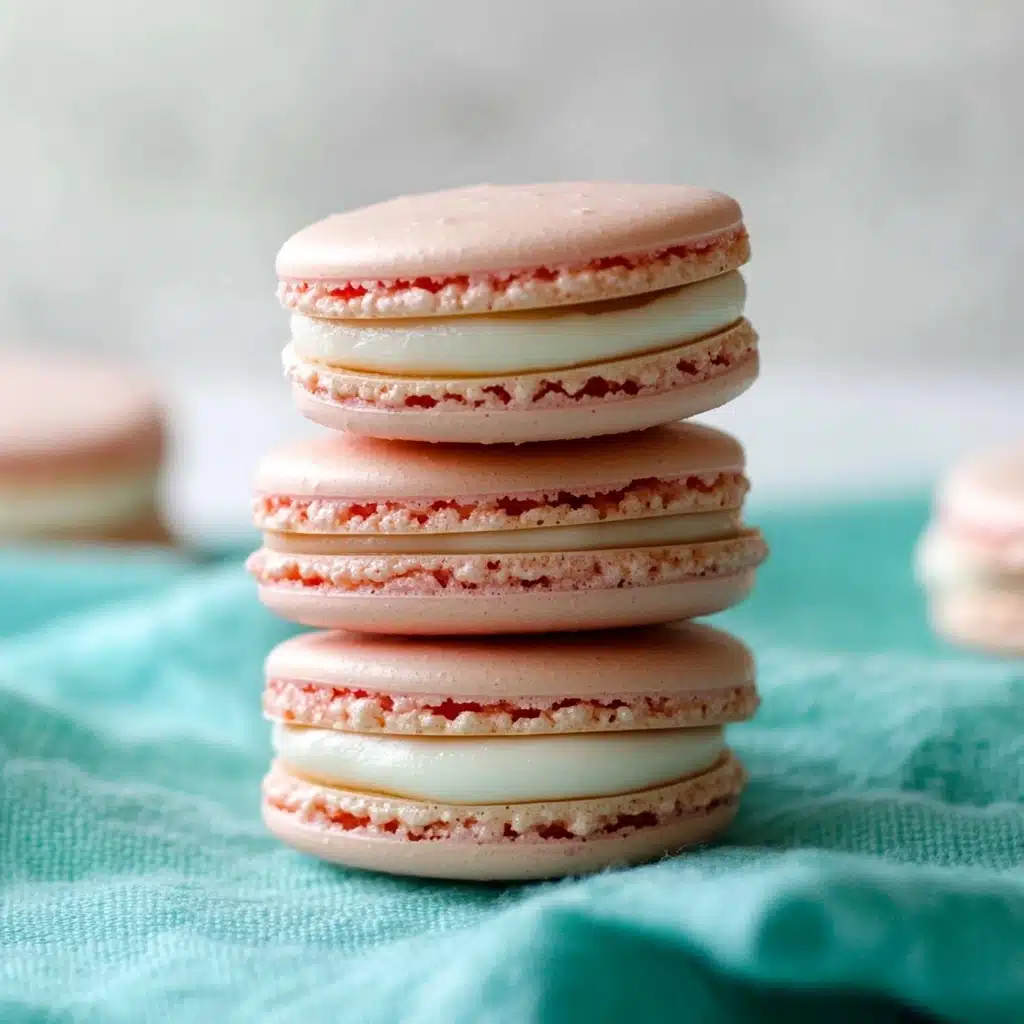
Garnishes
For an extra flourish, try dusting the shells lightly with edible glitter, cocoa powder, or sanding sugar before or after baking. You can even drizzle them with a touch of chocolate or pipe a playful swirl of buttercream—just a sprinkle takes your French Macarons from beautiful to breathtaking!
Side Dishes
French Macarons are show-stoppers on their own, but they shine with a pot of strong tea, a frothy cappuccino, or a glass of champagne. Pair them with fresh berries or a scoop of sorbet for a truly luxe dessert spread.
Creative Ways to Present
Arrange macarons in pastel towers for baby showers, line them up in rainbow rows for pride parties, or box them as elegant homemade gifts. Try stacking them vertically on a macaron tree or displaying them in mini glass domes for a Parisian patisserie vibe at home!
Make Ahead and Storage
Storing Leftovers
Store leftover French Macarons in an airtight container in the fridge for up to five days. They actually improve after a day or two, as the filling melds with the shells for an even lovelier bite!
Freezing
Macarons freeze beautifully! Place cooled, unfilled shells or fully assembled macarons in a single layer in an airtight container. Store for up to a month, and thaw at room temperature for best texture and flavor.
Reheating
French Macarons are best enjoyed at room temperature, so no reheating is necessary. Simply allow them to sit out for 15–30 minutes after chilling or thawing to restore their lovely, soft centers.
FAQs
-
Why do my French Macarons sometimes crack or have hollow shells?
Cracking can be caused by undermixed batter, not resting shells long enough, or baking at too high a temperature, while hollow shells are often a sign of over- or under-mixed meringue or incorrect oven temperature. Follow the figure 8 test and make sure the shells are dry before baking for best results!
-
How do I know when the macaron batter is mixed just right?
The perfect macaron batter flows like thick honey and passes the figure 8 test: you should be able to drizzle it in a figure 8 and have it blend back in within 8–10 seconds. Go slowly and check frequently, as a few turns make a big difference.
-
Can I make French Macarons without almond flour?
For a nut-free version, try replacing almond flour with finely ground sunflower seed flour. The flavor will be slightly different, and results may vary, but it’s a solid option if allergies are a concern.
-
Do I have to let the macarons “mature” overnight before serving?
Letting French Macarons age in the fridge for 12–24 hours improves both flavor and texture, as the filling melds with the shell. It’s optional, but if you can resist, it’s well worth the wait!
Final Thoughts
If you’ve ever dreamed of baking a tray of delicate French Macarons, now’s the time to roll up your sleeves and make it happen! Every batch is a learning experience, and with a little practice (and plenty of taste-testing), you’ll soon be sharing these gorgeous cookies with all your favorite people. Bon appétit and happy baking!
Print
French Macarons Recipe
- Prep Time: 1 hour (plus aging egg whites)
- Cook Time: 13 minutes
- Total Time: 1 hour, 30 minutes
- Yield: about 40 shells; 20 sandwiched macarons
- Category: Baking
- Method: Baking
- Cuisine: French
Description
Learn how to make classic French Macarons with this detailed recipe. These delicate, colorful cookies are perfect for special occasions or a sweet treat. Follow the step-by-step instructions to achieve the perfect macaron shells and flavorful fillings.
Ingredients
- 100g egg whites (usually between 3-4 large egg whites)
- 1/4 teaspoon (1g) cream of tartar
- 1/2 teaspoon extract such as vanilla, almond, coconut, etc. (optional)
- 80g superfine sugar (aka caster sugar, see note)
- 1-2 drops gel food coloring (optional)
- 125g almond flour
- 125g confectioners’ sugar
- desired macaron filling (some options listed in notes)
Egg White Mixture:
Almond Flour Mixture:
Macaron Filling:
Instructions
- Prepare Egg White Mixture: Start by wiping down a mixing bowl with lemon juice, then beat the egg whites with cream of tartar until soft peaks form.
- Prepare Almond Flour Mixture: Sift almond flour and confectioners’ sugar together.
- Combine Mixtures: Gently fold the egg whites into the dry ingredients until the batter reaches a honey-like consistency.
- Pipe and Bake: Pipe rounds of batter onto baking sheets, bake at 325°F for 13 minutes until set.
- Fill and Serve: Let shells cool, fill with desired filling, and enjoy!
Notes
- Freezing Instructions: Cooled macaron shells and finished assembled macarons can be frozen for up to 1 month.
- Special Tools: Electric Mixer, Glass Mixing Bowls, Metal Mixing Bowls, Fine Mesh Sieve, Piping Bag, Piping Tip, Baking Sheets, Silicone Baking Mat, Cooling Rack
- Egg Whites: Fresh egg whites are recommended for best results.
- Extract/Flavoring: Add 1/2 teaspoon of extract for additional flavor.
- Almond Flour: Use fine almond flour, not almond meal.
- Macaron Filling Ideas: Vanilla buttercream, chocolate buttercream, lemon buttercream, etc.
Nutrition
- Serving Size: 1 macaron shell (without filling)
- Calories: 80
- Sugar: 7g
- Sodium: 15mg
- Fat: 4g
- Saturated Fat: 0g
- Unsaturated Fat: 2g
- Trans Fat: 0g
- Carbohydrates: 10g
- Fiber: 1g
- Protein: 2g
- Cholesterol: 0mg

